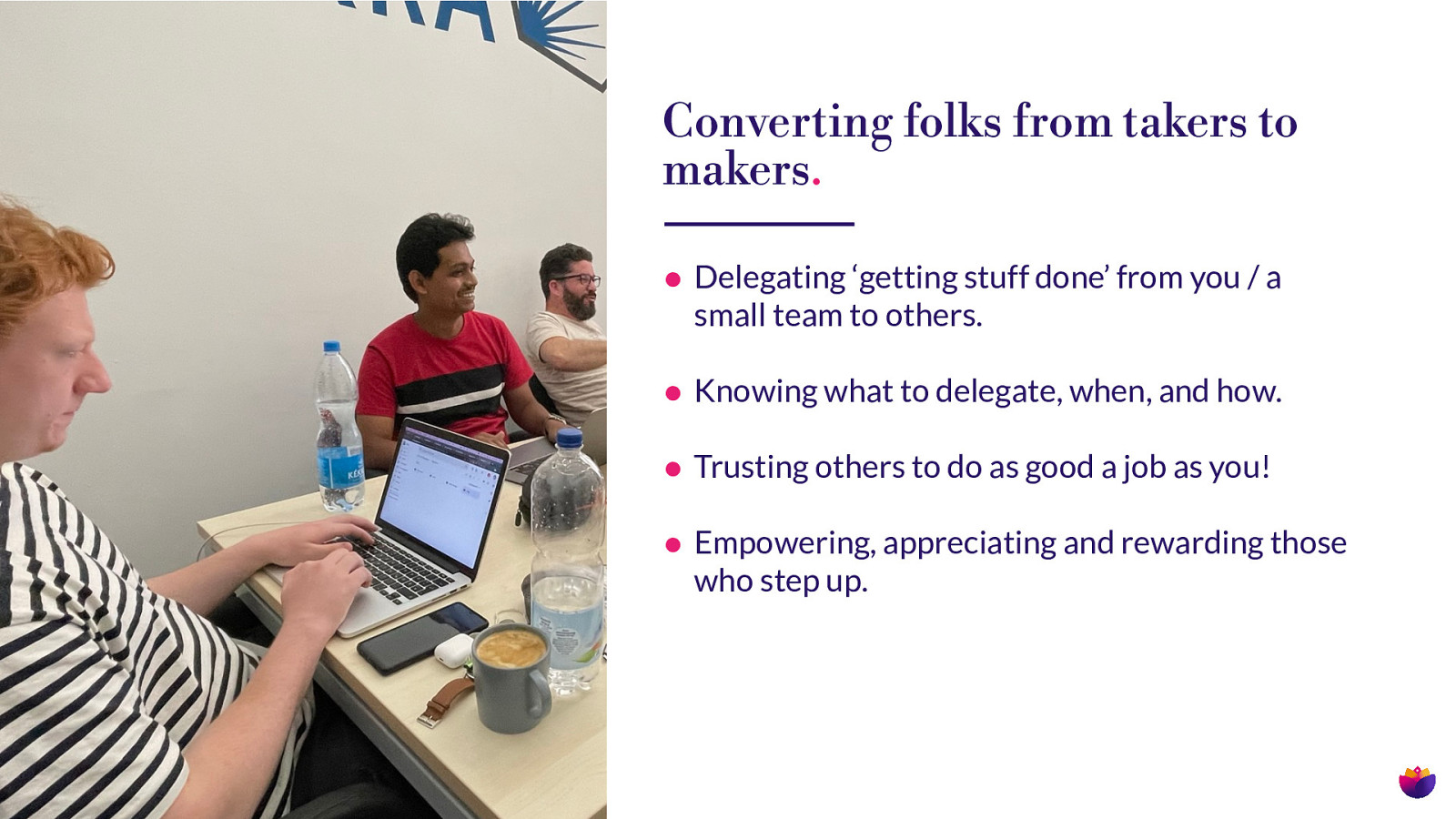So you’ve got a community … Now what? @RCheesley
Slide 1

Slide 2

Ruth Cheesley (she/her) Mautic Project Lead ruth.cheesley@mautic.org speaking.ruthcheesley.co.uk for slides, recordings, links and resources @RCheesley
Slide 3

Photo by Peio Bty on Unsplash Challenges ahead. Scaling communities can be full of challenges!
Slide 4

Growth, but not at the expense of culture. • As the community grows, it becomes ever more important to focus on culture. • What might have been a mutual understanding needs to become explicitly communicated. • You will have to take action against individuals who are not behaving in accordance with your expectations eventually.
Slide 5

Converting folks from takers to makers. • Delegating ‘getting stuff done’ from you / a small team to others. • Knowing what to delegate, when, and how. • Trusting others to do as good a job as you! • Empowering, appreciating and rewarding those who step up.
Slide 6

Avoiding burnout (you, and them). • Scaling a community of any kind can seem like a never ending, thankless task. • Driving contributor growth has to be done sustainably, for the contributors and for you. • You need to be able to switch off from your community completely - set up the conditions to allow that to happen sooner rather than later.
Slide 7

Photo by nzooo on Envato Setting yourself up for success. Suggestions for tackling the challenges
Slide 8

Growth, but not at the expense of culture. • Provide clarity • Core values, mission, vision, Code of Conduct • Governance - how decisions get made • How stuff gets done • Set the bar high, and keep it there • Model positive engagement • Act quickly and decisively against poor conduct (and own your mistakes, too) • Establish systems of self-moderation
Slide 9

Converting folks from takers to makers. • Capture tasks in a centralised system where folk can nd, assign and work on them. • Document how people can get involved across different roles - even if you have no active contributors in that area yet. • Decide how and when you will recognise fi contributors.
Slide 10

Avoiding burnout (you, and them). • Find a peer support group: CMX, DevRel Collective • Set clear boundaries, model healthy behaviour, encourage and support contributors to do the same. • Check in regularly with your key contributors for a friendly ‘coffee chat’, especially if there is any change in behaviour.
Slide 11

Keeping an eye on community health. Tools to help you track your community health.
Slide 12

Determine what is important. • Be wary of vanity metrics! • What actually makes a difference to this project or community? • What will you do with the metrics that you are tracking? • What about measuring non-code contributions?
Slide 13

Find a tool that works for you. • Should not add extra workload. • Should measure the things that you care about. • Tools to consider: • cauldron.io - https://cauldron.io/ • GrimoireLab - https://chaoss.github.io/ grimoirelab/ • Orbit - https://orbit.love/ • SavannahCRM - https://www.savannahhq.com/
Slide 14

Ruth Cheesley (she/her) Mautic Project Lead What questions can I answer? ruth.cheesley@mautic.org speaking.ruthcheesley.co.uk for slides, recordings, links and resources @RCheesley